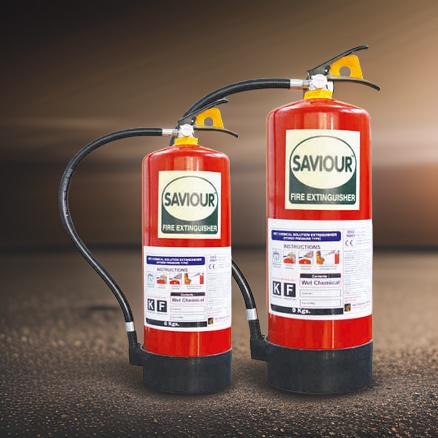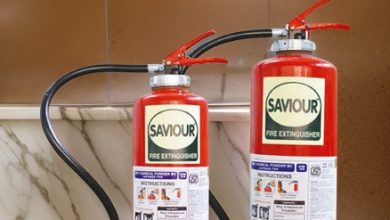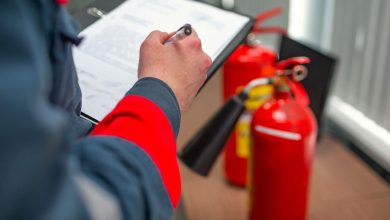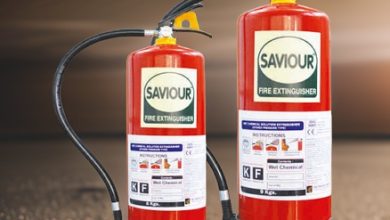The Benefits of Installing an Automatic Fire Extinguisher in Your Workplace
automatic fire extinguisher

Fire safety is a non-negotiable aspect of running a secure and responsible workplace. In many industries, the presence of fire hazards is a constant concern—from electrical panels to flammable materials. One of the most effective ways to ensure swift and automated protection is by installing an automatic fire extinguisher. At Sri Triveni Crafts, we understand how vital it is to protect your employees, assets, and business continuity through advanced fire suppression systems.
Automatic fire extinguishers are designed to detect and combat fires without the need for human intervention, making them an essential investment for workplaces of all sizes and sectors.
Why Workplaces Need Reliable Fire Protection
Addressing Fire Risks in Commercial Environments
Every workplace is vulnerable to fire hazards, whether from overloaded electrical circuits, heating equipment, flammable chemicals, or human error. Despite fire drills and manual extinguishers being part of the safety routine, these may not be sufficient during off-hours or in unmanned areas. Automatic fire extinguishers provide round-the-clock surveillance and response, even when no one is present to raise the alarm.
Key Benefits of Automatic Fire Extinguishers
1. Immediate Response to Fire
Automatic fire extinguishers activate within seconds of detecting a fire, minimizing damage and stopping the spread at its source. This quick reaction is crucial in areas like warehouses, control rooms, and storage spaces where fires can escalate quickly if left unchecked.
2. Minimal Human Dependency
Because these extinguishers operate without manual input, they eliminate the need for someone to be physically present or trained to respond in a crisis. This feature significantly enhances workplace fire extinguisher safety, especially in remote or restricted-access areas.
3. Cost-Effective Protection
Though the initial investment may be slightly higher than manual systems, automatic extinguishers can prevent costly fire damage and downtime. The savings in terms of reduced insurance claims, repairs, and operational disruption often outweigh the initial cost.
Supporting Equipment: ABC and Modular Fire Extinguishers
In a complete workplace fire safety setup, ABC fire extinguishers and modular fire extinguishers play important roles alongside automatic systems.
-
ABC fire extinguishers are versatile tools that combat Class A (ordinary combustibles), Class B (flammable liquids), and Class C (electrical fires), making them ideal for general workplace use.
-
Modular fire extinguishers are a type of automatic extinguisher, typically mounted on ceilings. These are especially useful in electrical rooms, data centers, and areas with limited foot traffic. They combine the benefits of automated activation with strategic coverage, ensuring high-risk zones are protected without cluttering floor space.
By integrating these devices into your safety plan, you ensure layered protection tailored to your workplace’s unique risk profile.
Boosting Fire Extinguisher Safety Protocols
Regular Inspections and Maintenance
For all fire extinguishers, including automatic and modular types, regular checks are essential. Businesses should schedule professional inspections to ensure pressure levels are optimal and components are in working order.
Proper Placement and Coverage
Strategic placement of fire safety equipment is just as important as the equipment itself. Position extinguishers where fire risks are highest, and ensure nothing blocks access or disrupts discharge patterns.
Employee Awareness
Even though automatic extinguishers reduce the need for human response, employees should still understand fire safety basics. This includes evacuation procedures and awareness of where manual extinguishers are located.
Ideal Workplaces for Automatic Fire Extinguisher Installation
Automatic extinguishers are suitable for a wide range of professional settings:
-
Factories and industrial units with flammable materials or machinery
-
IT companies needing fire safety for server rooms and electrical equipment
-
Commercial kitchens where oil fires may start when the kitchen is closed
-
Retail stores that contain a mix of electrical systems and combustible stock
-
Storage facilities with high-value goods or sensitive materials
Their versatility, fast action, and low-maintenance nature make them a wise choice for any modern workplace.
Conclusion
Investing in an automatic fire extinguisher is more than just meeting fire safety standards—it’s about protecting your people, property, and operations from unpredictable fire emergencies. Automatic systems provide swift, consistent, and effective protection when it matters most.
At Sri Triveni Crafts, we offer a comprehensive range of fire extinguishers tailored to meet your specific needs. Whether you require automatic, ABC, or modular fire extinguishers, you can trust us to deliver quality solutions that put safety first. Visit https://www.sritrivenicrafts.com/ to learn more about our fire protection products and services.
Frequently Asked Questions (FAQs)
1. What makes automatic fire extinguishers different from manual ones?
Automatic extinguishers activate on their own when they detect high heat, requiring no human involvement. This allows for quicker response times in unattended areas.
2. Are automatic fire extinguishers suitable for all types of workplaces?
Yes, they are versatile and can be installed in offices, factories, server rooms, and commercial kitchens—anywhere that fire risks are present.
3. How do modular fire extinguishers work?
Modular fire extinguishers are typically ceiling-mounted units that discharge when a preset temperature is reached, covering a specific area effectively and automatically.
4. Can ABC fire extinguishers be used alongside automatic systems?
Absolutely. ABC extinguishers are perfect for manual use and complement automatic systems by covering a wider range of fire types in accessible areas.
5. How often should workplace fire extinguishers be inspected?
Fire extinguishers, including automatic ones, should be professionally inspected at least once a year. Some environments may require more frequent checks based on usage and risk levels.


